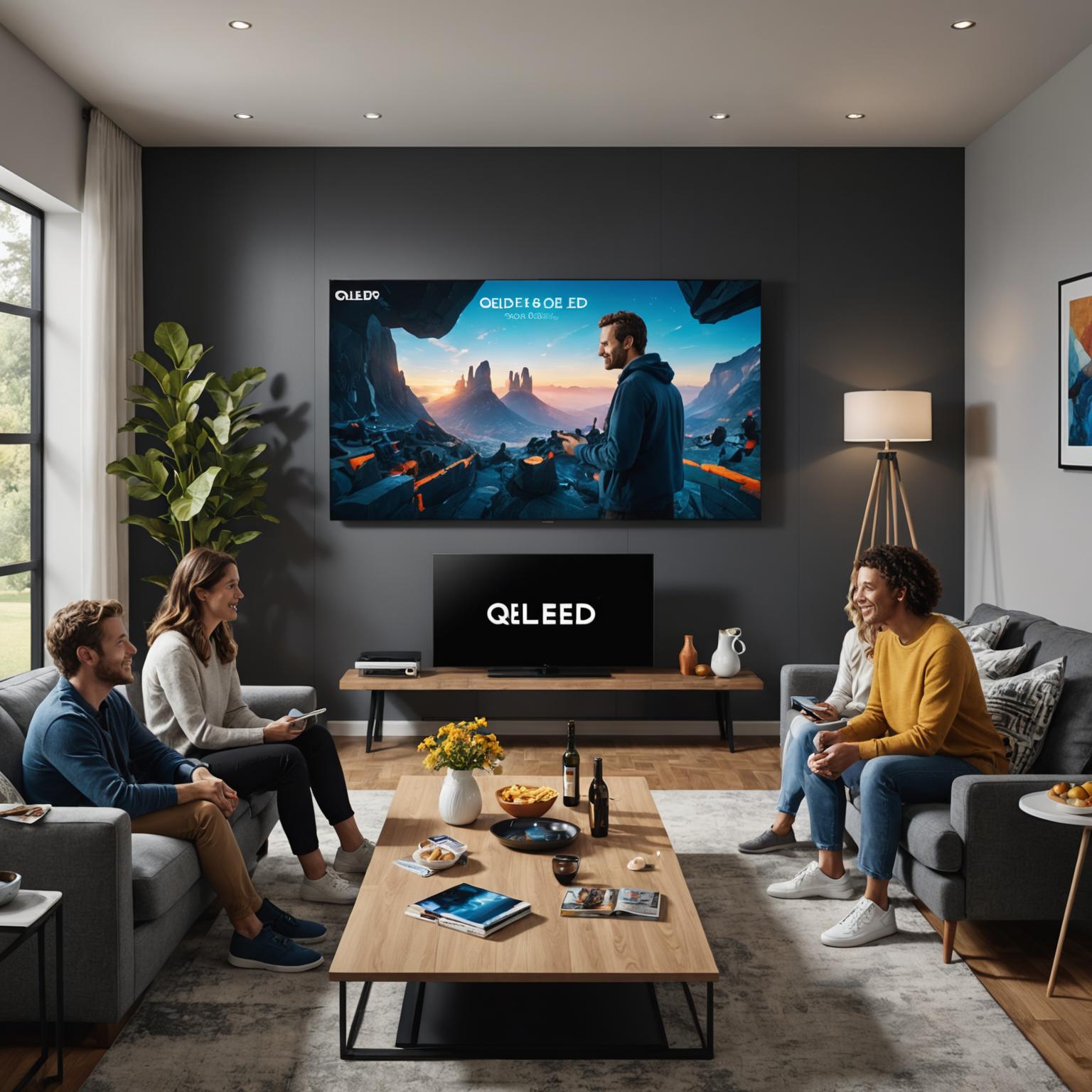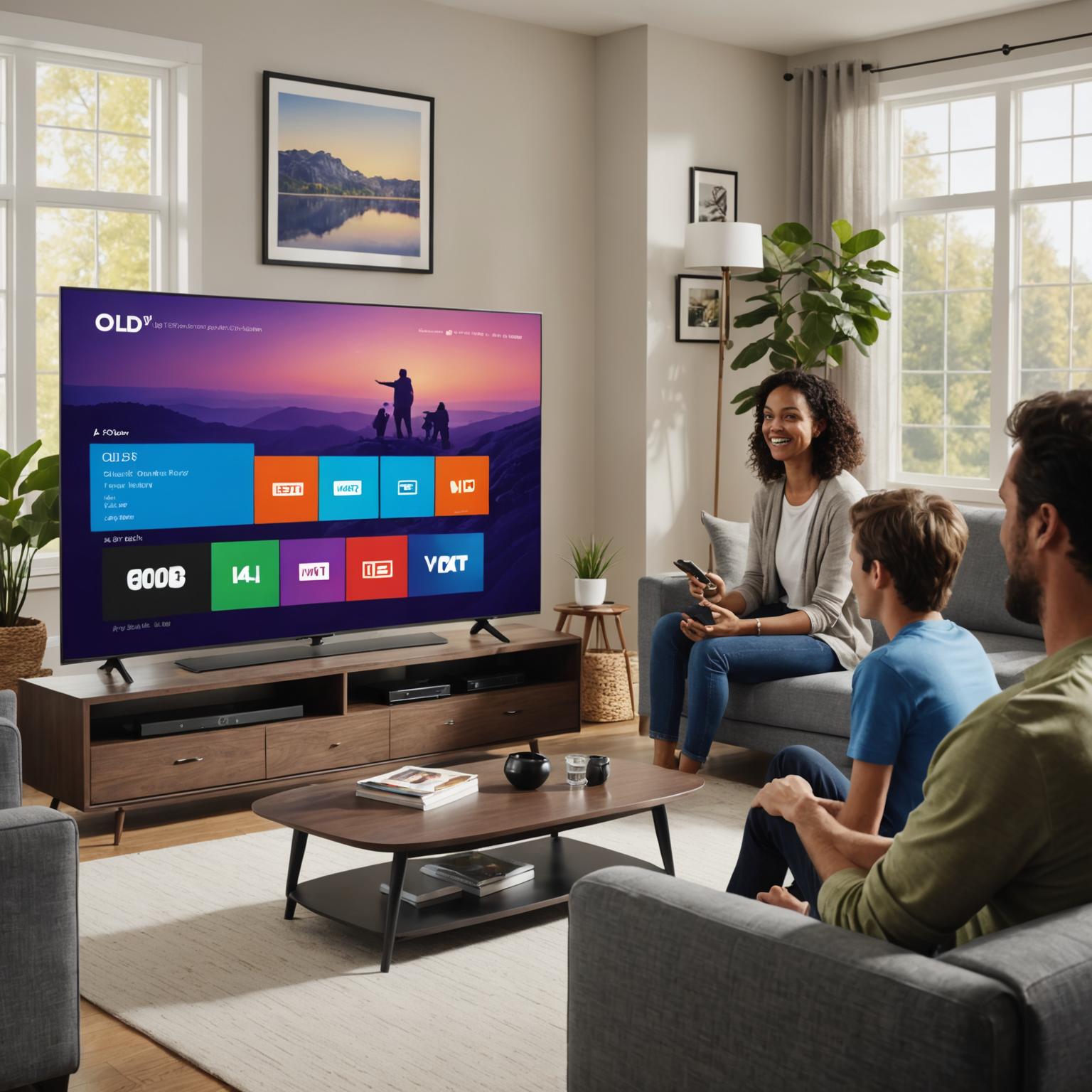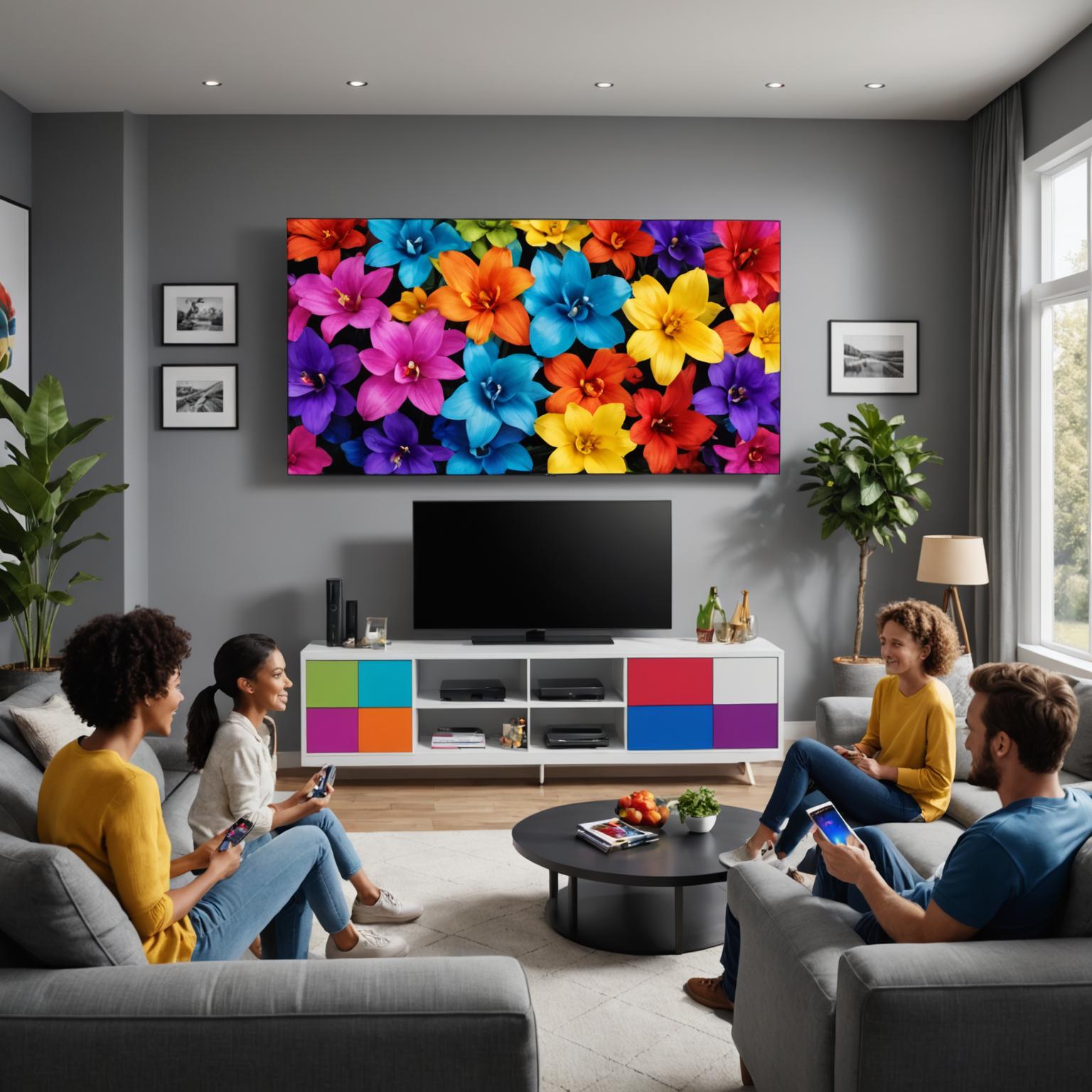
Understanding the Screen: OLED, QLED, and LED TV
The first major decision in any TV buying guide is the screen technology. The most common types you'll encounter are LED, QLED, and OLED. A standard LED TV uses a backlight to illuminate its pixels and is the most common and affordable option available. For a significant step up in quality, consider QLED and OLED TV models. QLED TVs, like the UltraVision model with its vibrant floral display, use a quantum dot filter over an LED backlight to produce a wider range of brilliant colors and higher brightness levels. This makes them excellent for well-lit rooms. An OLED TV, on the other hand, doesn't need a backlight; each pixel creates its own light. This allows for perfect black levels, infinite contrast, and exceptionally thin designs, making it a favorite among cinephiles for its incredible picture quality in darker environments.
Resolution Matters: Why a 4K TV is the Standard
Resolution determines the sharpness and clarity of the picture. Today, the industry standard is 4K, also known as Ultra HD. A 4K TV has four times the number of pixels as an older 1080p HD TV, resulting in a much crisper, more detailed, and realistic image. As seen in models like the BONT 65-inch TV, 4K resolution can make it feel like you're looking through a window rather than at a screen. With the vast majority of new content from streaming services and gaming consoles being produced in 4K, investing in a 4K TV is essential to future-proof your entertainment setup and enjoy content as its creators intended.
More Than Just a Screen: The Rise of the Smart TV
Modern televisions are much more than just displays; they are complete entertainment hubs. A smart TV connects to the internet, giving you access to a world of content through apps like Netflix, Amazon Prime Video, and more. When evaluating a smart TV, pay attention to the user interface. A good system should be fast, responsive, and easy to navigate. Features like voice control, as seen with modern remotes, simplify the process of finding what you want to watch. Furthermore, check for ample connectivity options, including multiple HDMI and USB ports, to ensure you can easily connect all your devices, from gaming consoles to soundbars.
How to Find the Best TV Deals and Top Rated TVs
Once you know what features you want, it's time to find the right model at the right price. A great starting point is to read TV reviews from both professional critics and everyday users. These reviews offer valuable insights into a TV's real-world performance and can highlight potential issues not apparent on a spec sheet. Different TV brands specialize in certain technologies, so comparing brands is crucial. To find the best TV deals, keep an eye out for seasonal sales events like Black Friday or the period just before new models are released in the spring, when retailers are looking to clear out last year's stock. Often, top rated TVs from the previous year offer the best balance of performance and value.
Making Your Final Decision: The Ultimate TV Buying Guide
Ultimately, the best television for you depends on your personal needs. Consider your primary use: are you a movie lover who craves cinematic quality, a gamer who needs low input lag and high refresh rates, or a casual viewer who just wants a reliable set for news and shows? Also, think about your room's lighting and viewing distance. By combining your personal requirements with the knowledge of screen types, resolution, and smart features, you can confidently select a television that will not just fit into your living room but elevate it into an extraordinary entertainment space for years to come.



